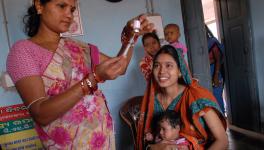Indians Are Consuming Food Devoid of Pulses and Milk

Image Courtesy: healthannotation.com
Are Indians eating healthy food? A new report by The Indian Express suggests that Indians, especially from poorer sections, are consuming food devoid of pulses and milk. At a Global Pulse Conclave held in Pune earlier this month, it was found that the consumption of pulses in India has flattened. Every year, top pulse leaders from different countries participate in Global Pulse Conclave annual convention and share “insights on the market outlook for the various pulse corps”. This year, it was found that the drastic decline in the consumption of pulses was linked to their rising prices.
According to the report published by the National Sample Survey report (NSSO) referred to by The Indian Express, it has been found that there was a rise in consumption of pulses when the prices dipped. “Between 2013-14 and 2017-18, it rose from 18.6 million tonnes (mt) to 22.5 mt, but fell to 22.1 mt in 2018-19 and is projected to further decline to 20.7 mt this year.”
There has been a decrease in the consumption of milk as well, shows data from successive annual reports of the National Dairy Development Board (NDDB).
As per, NDDB, total liquid milk marketing by cooperatives (which accounts for the majority of sales in this segment) has increased from 201.03 lakh litres per day (LLPD) in 2008-09 to 294.44 LLPD in 2013-14. In 2018-19, this figure reached 354.53 LLPD.
This means that the compound annual growth rate (CAGR), which was 7.9% during 2008-09 to 2013-14, has fallen to 3.8 % in the last five years.
What’s more, as the news report points out, this has happened despite lower inflation. In the years 2008-09 and 2013-14, “prices of full-cream milk in Delhi rose from about Rs 24 to Rs 46 per litre. In the subsequent five years till March 2019, the jump was only to Rs 52 per litre.”
As per the Food & Nutrition Security Analysis (2019) report accessed by NewsClick, in 2015-16, only 9.6% children between 6-23 months were consuming minimum acceptable diet. “The highest percentage of children receiving adequate diet was in Puducherry (31%) and Tamil Nadu (31%),” the report said.
“The stagnant consumption trend in both milk and pulses is largely due to incomes, which aren’t rising as before. This is especially for the poorer sections, whose spending on protein-rich “superior” foods tends to increase even more with higher incomes,” said veteran agriculture economist Ashok Gulati to The Indian Express.
Wages are linked with the rise and fall in the consumption of pulses and milk. The report suggests that the increase in the rural wages between 2014-15 to 2018-19 has only been 5.3 % (in nominal terms) and 0.6 % “after adjusting for consumer inflation of 4.7%”. “In the preceding five-year period, nominal rural wage growth averaged 17.6% and 6.8% annually in real terms,” the news report said.
Get the latest reports & analysis with people's perspective on Protests, movements & deep analytical videos, discussions of the current affairs in your Telegram app. Subscribe to NewsClick's Telegram channel & get Real-Time updates on stories, as they get published on our website.
























